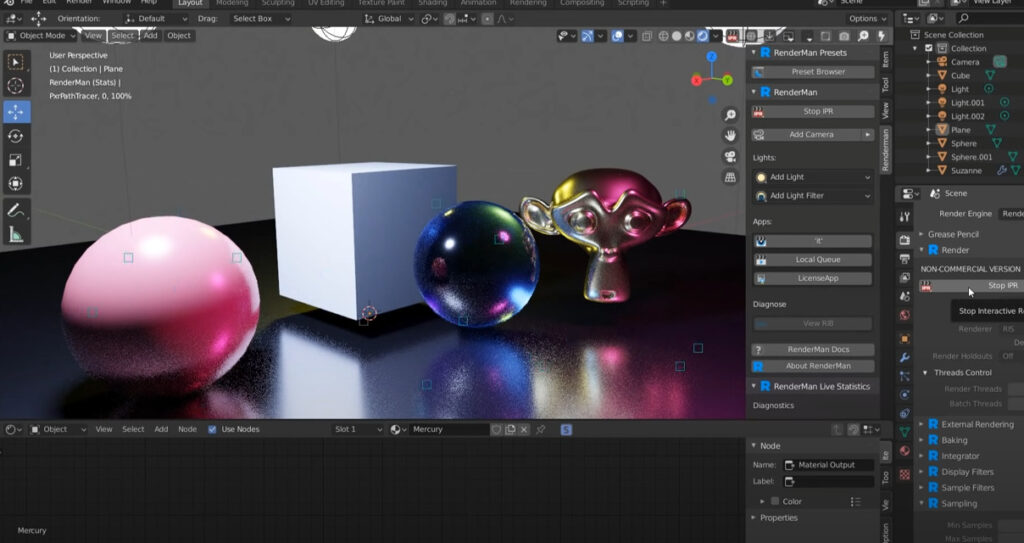
That location can be outdoors, an interior, or even a studio lighting environment. Many HDRI maps are created photographically to capture a real-world location. If something important like the sun is clipped away the render will totally suck.Often image-based lighting is simply used as an easy lighting method with a library of HDRI maps used as 'easy lighting presets'. The worst thing is that angmap clips the corner of the image away, and polar is using them. *) an polar image might work if lucky - the distortion may not be noticed. It will be slow but it will only need to be used for the lowres lightning image so it just might work. That makes a importscript prety useless as almost all sIBL files contains a polar (latlong) light image.īut possibly we can write a re-projection function i python. The problem remaining is that you have* to have an angmap for lightning. I use that trick to create a richer specular effect on those ugly pink things in the example render. If You got a mate mirror You can turn 'max dist' down below 1000 under mirroring on those materials and they will use the light map for mirroring and render faster. But You probably want to use another layer for the background anyway and use nodes to adjust the color after the render - but You don't have to!

Increase the camera end-clipping so it can see the outer sphere.ĭone! Will render in one render. Set the lightning with an lowres angmap image in the world texture as described above in this threed. As the sphere is way to far away to effect the gathering it will not effect lightning. Scale it a little bit larger then the first sphere so the first hide it for mirroring. Make another sphere just like the first but use the high-res image for texture and just keep it on layer one. That way the sphere will be used for mirroring, but not be rendered it self.

In render layer set layer 1 and 2 visible (Scene), but only layer 1 included (Layer). It's easy to find out with some experimenting. I also rotated the sphere around to match, but i can't on top of my head remember exactly how. set the x axis scale to -1 else the texture be mirrored as we watch the sphere from the inside. Put the mirror map on a sphere in the center, make it shadeless, scale it up 1000 times. (btw, sIBLedit uses a bluring method wich actually takes the perspective distortions for long/lat projections into account, so for those people wich do want a more accurate blur I would rather recomend its method )Īnyway not wanting to be ungratefull or nitpicking / diminishing your tutorial, just providing further input So the only thing you actually need is a way to actually composite the backgroundīut unfortunatetly, as said in the last post about this topic:Īng(ular) Mapping is for Mirror Ball projections only, and will produce distorted / wrong results along the x axis when used in combination with a 360x180 standard projection method.īut, basically if you want to catch the set data as quickly as possible, you would only rely on the reflection map shooted either by a mirror ball or a fisheye, and use the actual camera footage as a background. set diffuse and specular to 0ĭeactivate traceable, shaddow recive, AND Cast Aproximate. Setup the enviroment lightning texture as you want it.Īdd a sphere, unwrap a spherical uv map, assign the reflection texture. Use Indirect lightning with _Aproximate_ Gather (not sure if they keep it and how far it goes back)

This approach works with Blender as well with other modern GI based render engines such as VRay or Thea which can be used with Blender.Ĭomparison of generated images for Background, Reflection, and GI.īlend Demo File 1 ( World Texture Setting )īlend Demo File 2 Background Sphere MatchingĪctually in the current builds there would be a way to incooperate reflection and env lightning into one render pass: This approach delivers crisp results for the background while reducing the needed render time for HDRI based GI renderings. If you are interested, they also offer through Amazon a very good book about HDRI called "The HDRI Handbook".Īs a small explanation, under smarts IBL you understand the concept of using a high res JPG image for the background, a medium res HDRI image for raytraced reflections and a blurred and low res HDRI file for the diffuse light GI calculation.

#Blender renderman hdri free
In addition the website also hosts a set of pre-made HDRI sets free of charge.
#Blender renderman hdri software
With this software you can generate the needed image files for the background, reflection and GI pass. This software can be used to generate HDRI files from your digital photography. For those new to HDRI and Image Based Lighting, or those who use it, HDRILabs offers two very useful tools for your HDRI IBL workflow for free.


 0 kommentar(er)
0 kommentar(er)
